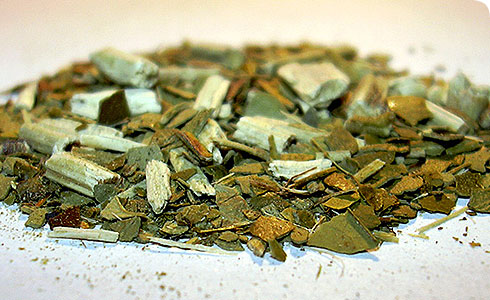Ethnobotanical use
Scientific studies attribute yerba mate’s medicinal properties to its chemical composition.
Yerba mate contains saponins - water-soluble compounds found in many plants. Their properties include:
- antiparasitic
- hypocholesterolemic
- anti-inflammatory
The compounds also account for the characteristic bitter flavour of mate tea.
The class of purine alkaloids called xanthines - found in coffee as caffeine, and in chocolate as theobromine - is also present in yerba mate. These components give yerba mate the ability to stimulate the central nervous system.
The principal constituents that account for the antioxidant capacity of yerba mate are polyphenols and caffeoyl derivative.
Yerba mate is also diuretic, beneficial for the cardiovascular system and is thought to have potential in the management of obesity.
Yerba mate also possesses a high concentration of vitamins (A, C, E, B1, B2, Niacin (B3), B5 and B Complex) and minerals (aluminium, chromium, copper, iron, manganese, nickel, potassium and zinc).
Together these components make it a nutritious beverage.
Yerba mate adulterants
Ilex dumosa, which is found in the same habitats as Ilex paraguariensis, has been preferred as an adulterant or substitute for genuine yerba mate since colonial times.
Other common Ilex species, such as Ilex argentina, Ilex brevicuspis,Ilex microdonta, Ilex pseudoboxus and Ilex theezans are also found as adulterants. These all have a different concentration of saponins, which directly affects the taste of the mate tea, and therefore its quality.
